Radiant M78, Barnard's Loop & the Elusive 'Boogeyman' Dark Nebula.
Orion's jewel box of cosmic wonder delights with both light and dark
High above, woven into the tapestry of Orion's shimmering stars, lie two celestial wonders: M78 ‘the mirror of creation’ and the ‘Boogeyman Nebula’, divided from each other by an illusive red band known only as “Barnard’s Loop”.
M78, the Mirror of Creation, shines with a ghostly blue hue, reflecting the light of nascent stars wrapped in cosmic dust—a luminous beacon heralding the birth of new worlds. Adjacent to this radiant glow, the Boogeyman Nebula looms as a Beacon in the Darkness, its shadowy silhouette obscuring the starlight behind it, embodying the profound mysteries that the cosmos holds.
Together, they paint a mesmerizing portrait of light and shadow, creation and obscurity, inviting us to peer deeper into the universe's most enigmatic corners through the lens of modern astrophotography. Here, the scene is revealed by hours of exposure by the revolutionary D3 Smart Telescope.
Barnard's Loop Mosaic
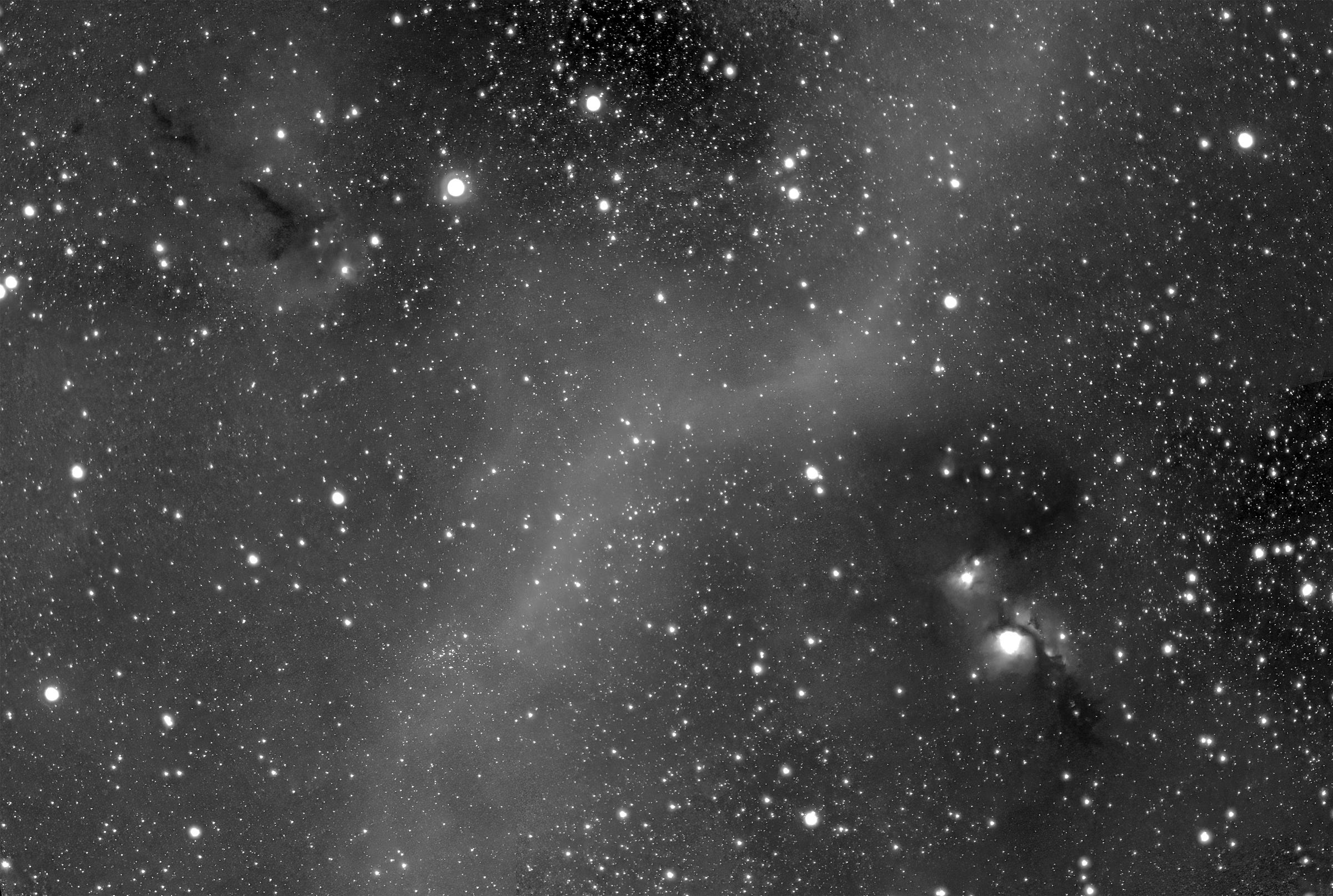
In the late last week of December 2024, I aimed my DWARF 3 at a stretch of Barnard's Loop, a vast, faint arc of hydrogen gas that curves broadly around Orion's belt and sword stars. At the center of this arc are those two well-known and celebrated nebulae.
Nestled within this deep-space tapestry is M78, the "mirror of creation," the brightest reflection nebula in the night sky, glowing like a celestial lantern as it scatters the light of nearby hot stars. But the real challenge? The Boogeyman Nebula (LDN 1622), a sneaky little dark nebula lurking in Orion's foreground, absorbs more light than it emits—the ultimate game of cosmic hide-and-seek. This one takes serious exposure time to pull from the shadows!
Another gem in the capture nestled above the glowing red arc is the intriguing NGC 2112, an ancient open star cluster over 2 billion years old. This makes it a true elder statesman in a region filled with hot, reddish stars. Seeing all these objects together in one wide-field mosaic puts Orion's complexity into perspective—stellar nurseries, ancient clusters, glowing nebulae, and dark dust clouds woven into one massive cosmic story.
M78, the "mirror of creation"
M78 captivates astrophotographers with its ethereal blue glow. Often dubbed the Mirror of Creation, it shines by reflecting the light of nearby young, hot stars enveloped in cosmic dust. This glow isn't just a visual spectacle—it's a glimpse into a stellar nursery where new stars are born, illuminating the processes that continue to shape our universe. The interplay of light and dust in M78 creates a cosmic canvas, showcasing the delicate artistry of star formation. With the advent of modern astrophotography and accessible technology like the D3 telescope, capturing the radiant beauty of M78 has become an attainable adventure, bringing us closer to the ongoing dance of creation unfolding light-years away.
The Boogeyman Nebula (LDN 1622)
Adjacent to the radiant glow of M78, the enigmatic Boogeyman Nebula—also known as LDN 1622—lurks within the constellation Orion, cloaked in cosmic shadow. I have dubbed this the Beacon in the Darkness. This dark nebula earns its haunting moniker from the silhouette it casts against the starlit backdrop, resembling a phantom figure woven from interstellar dust and gas. Unlike its luminous neighbor, the Boogeyman Nebula doesn't emit or reflect light; instead, it absorbs the brilliance of stars behind it, creating a striking contrast that captivates astrophotographers and stargazers alike. Albeit a tiny area of illumination in a glowing arc (see below), this celestial shadow puppetry not only adds depth to the tapestry of the night sky but also conceals stellar nurseries where new stars quietly ignite. Unveiling the mysterious allure of the Boogeyman Nebula invites us to peer into the universe's hidden recesses.
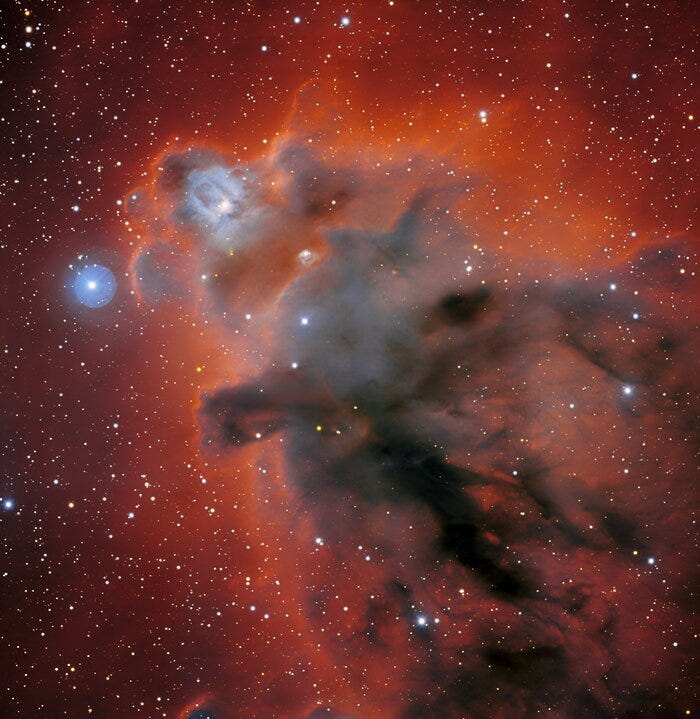
How to find M78 & Barnard’s Loop in Orion
M 78 is easy to locate, about 3° northeast of Zeta Orionis (Alnitak), the easternmost star in Orion's Belt. Visually, M 78 resembles a faint comet. It is visible in binoculars under suitable conditions as a very dim nebulous patch about 8' x 6' in size. Small telescopes show it remarkably well, and reveal the two illuminating stars, which appear like a double nucleus in the compact "comet head". These two stars, HD 38563A and HD 38563B, are responsible for making the cloud of dust in M 78 visible. The nebula fans out to the southwest and suggests a faint comet tail.
The other nebulae in this field require a very dark sky and are much more challenging to see. Under excellent conditions, a 4-inch scope can reveal NGC 2071 and suggestions of haze around M 78. Fewer stars to the west indicate that dark nebulae in this region obscure the stellar background. To spot the loop itself, a long-exposure astrophoto session is required; for this, I recommend the D3.
About 1-3/4° east of M 78, the open cluster NGC 2112 is found. This cluster is about 9th magnitude and 11' in diameter. It lies behind M 78 at a distance of about 2800 light-years and is much older, estimated at 2 billion years.





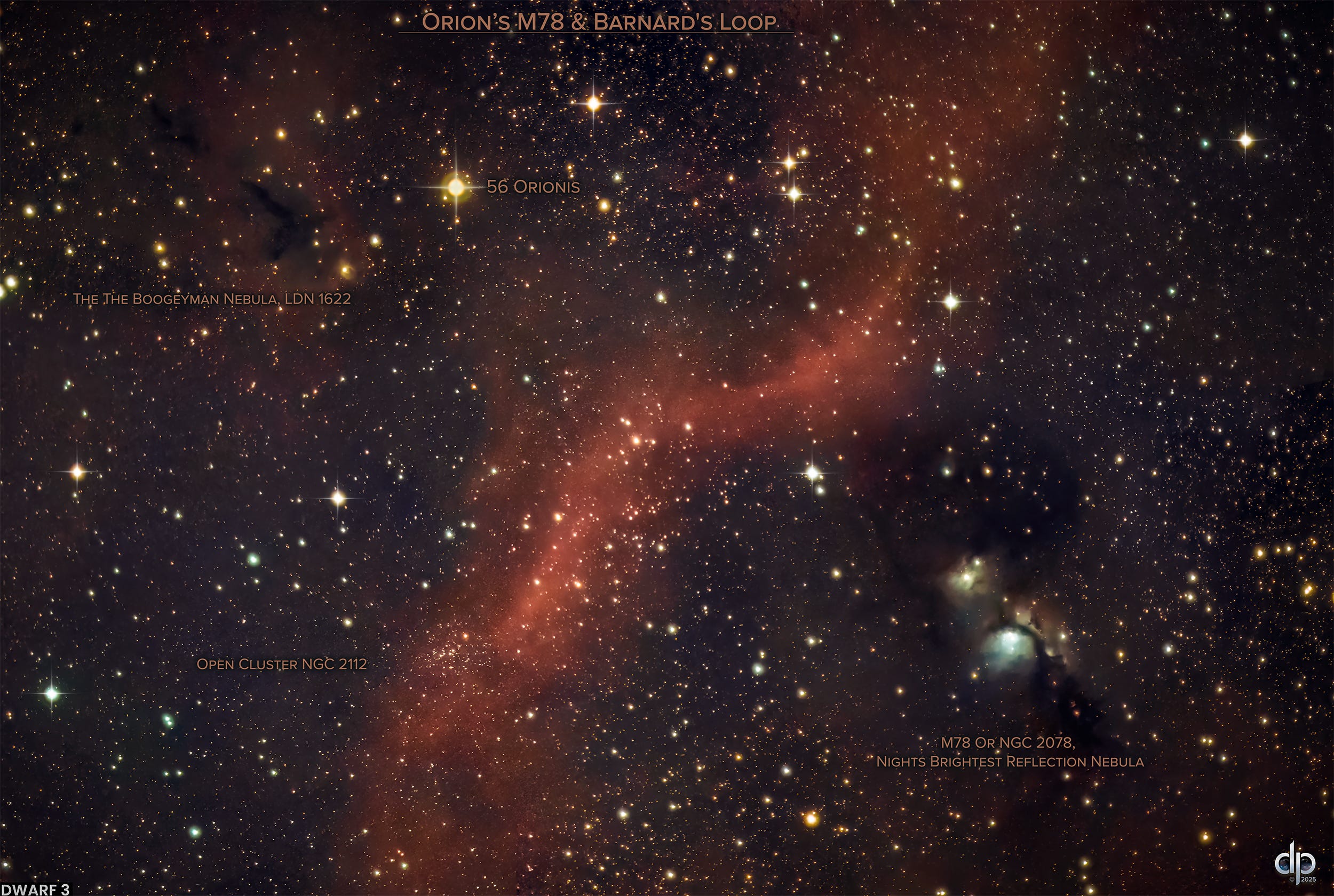
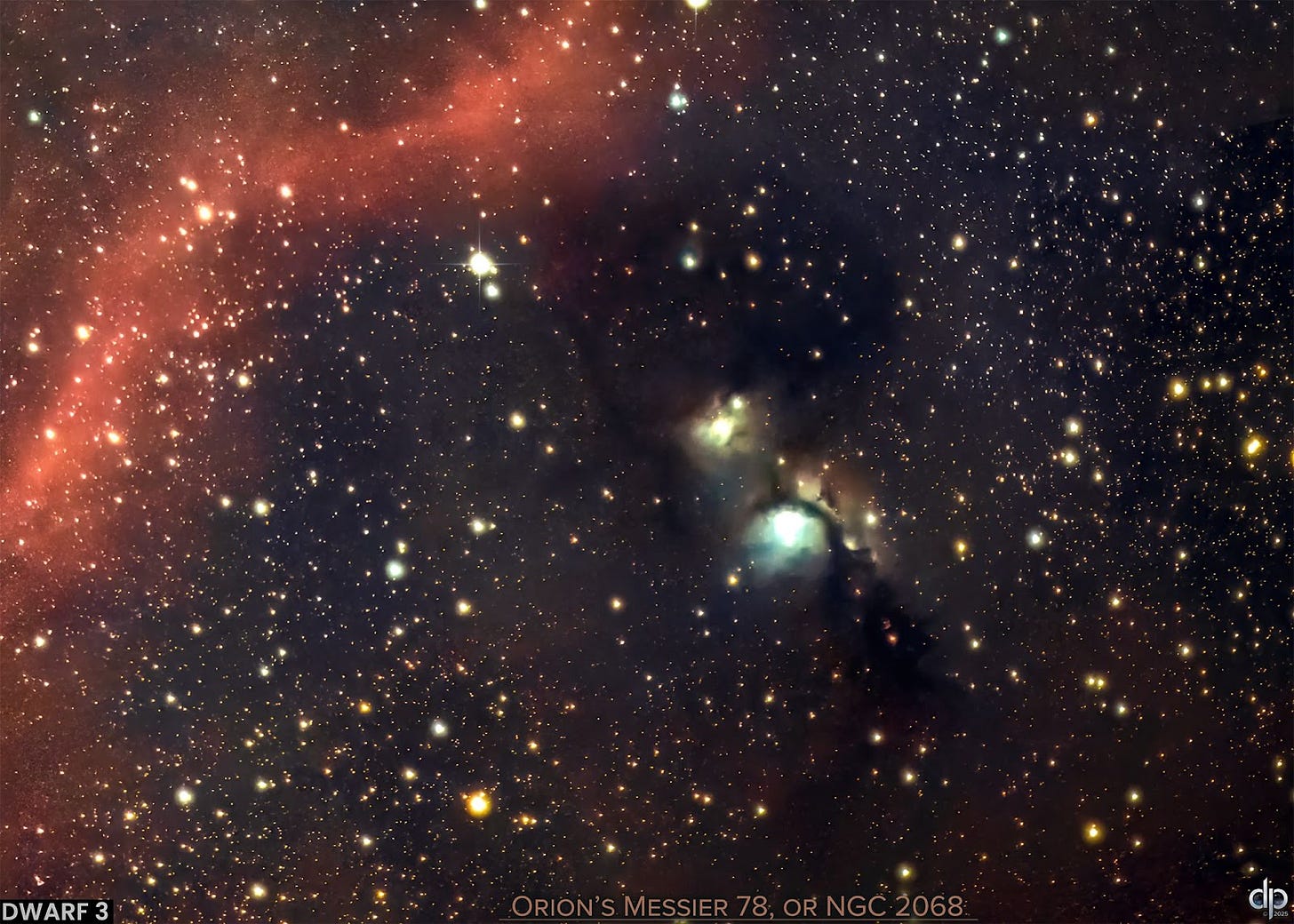
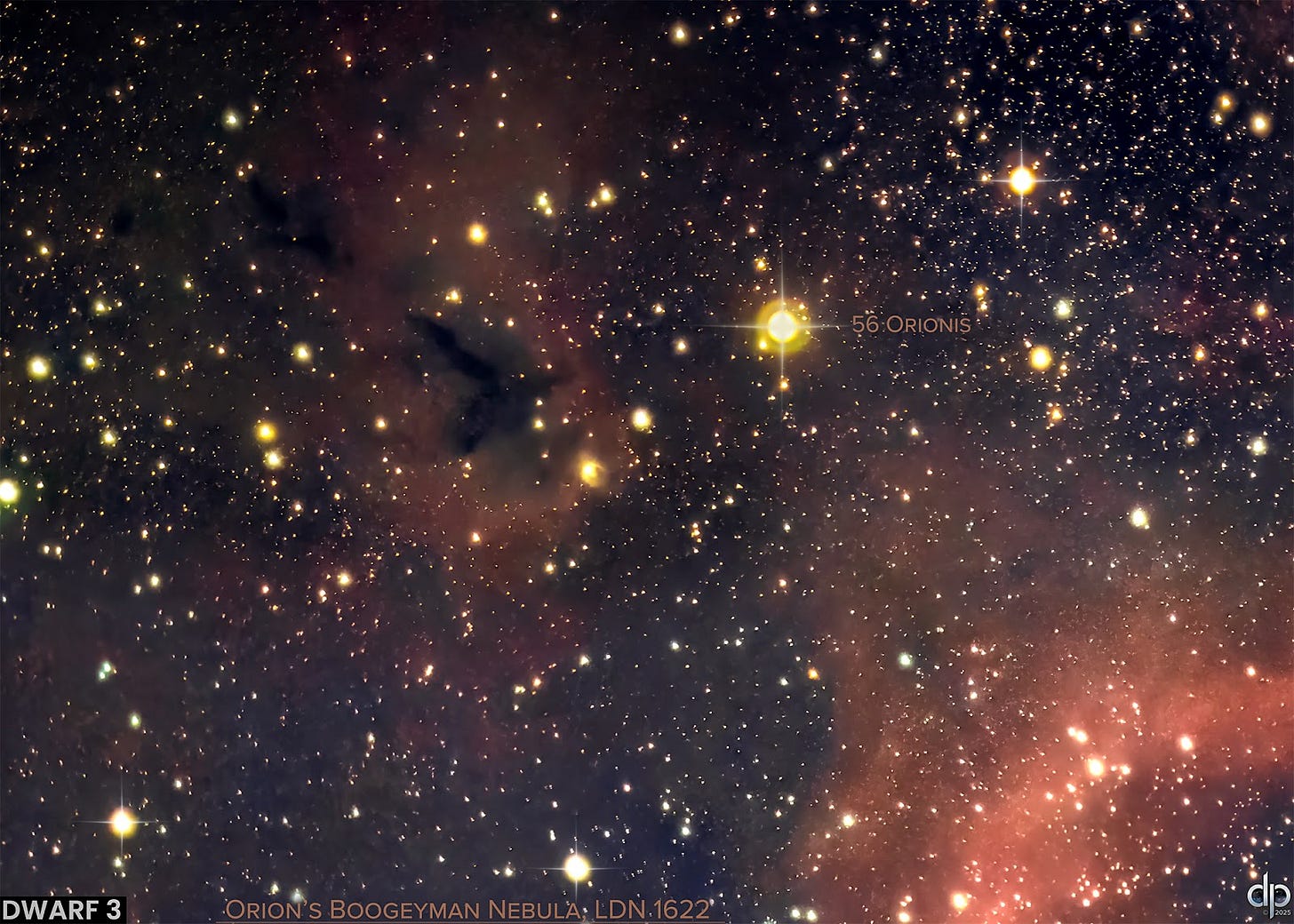
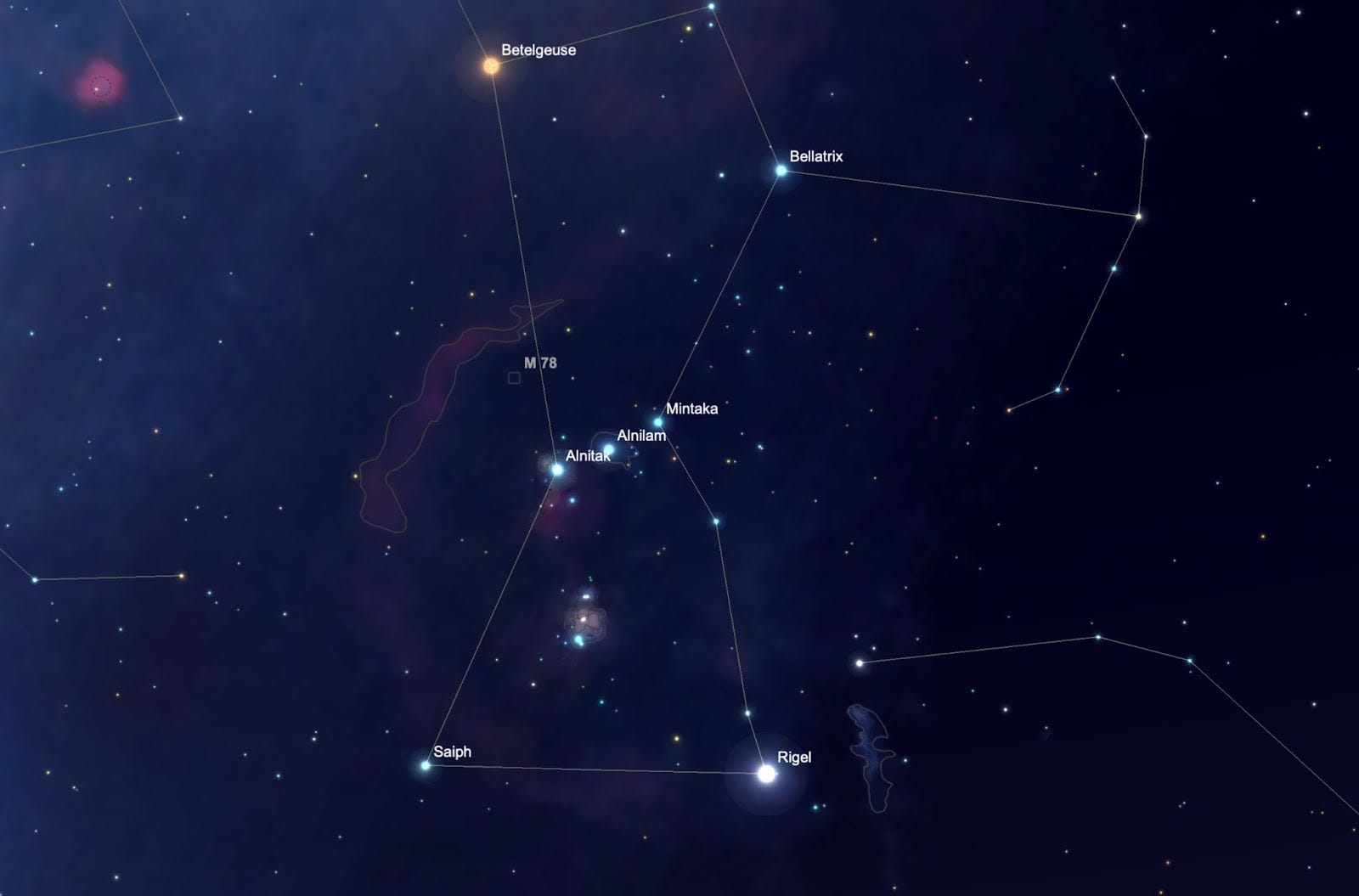


Brilliant work and story telling makes it a great read...keep it up